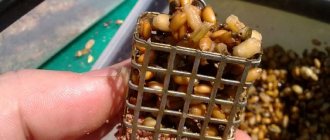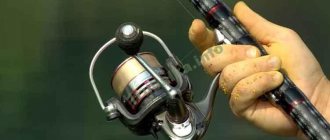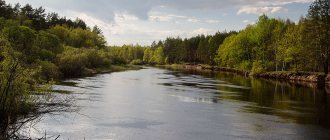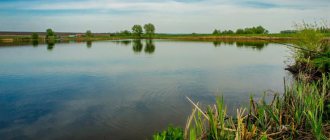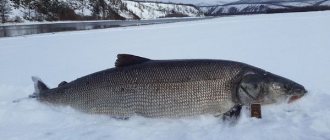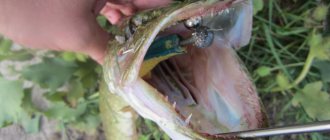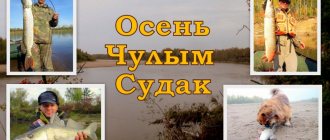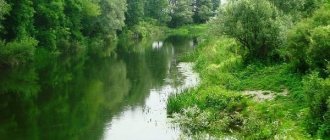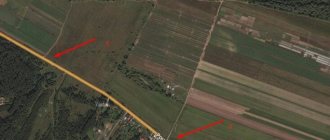1. Fishing on the river for peaceful fish (where to fish on the river, bait for river fish).
2. Method of catching peaceful fish on the river (fishing gear, place for fishing).
3. Fishing on the river for predatory fish (fishing from a boat at depth and under the shore).
4. Fishing on the river in the coastal zone (fishing from the shore).
5.Fishing on medium-sized rivers (methods of fishing on a medium-sized river).
6. Fishing on small rivers (what kind of fish is caught on small rivers, fishing methods).
Fishing on the river for peaceful fish.
Firstly, I want to point out that this article is not intended to somehow teach or convince experienced anglers who have been fishing for a long time and have their own skills and principles in fishing. This is simply a description of how I fish myself and my fishing methods, which I learned while fishing on the river. In addition, at the moment I will note that I am not a specialist, but a fisherman who, above all, is glad to have any opportunity to go fishing, and it does not matter whether one catches a roach or several large bream or carp.
In fact, I prefer to hunt bream, as I believe that this fish deserves respect for its caution and cunning. I believe that many anglers underestimate this and do not try to catch it purposefully. There are fishermen who deliberately avoid catching bream and, when they catch one, are rather upset, because they were determined to catch carp. Carp are so popular nowadays and I can safely say that life in many areas is literally heaven for bream.
In addition, these fish are very shy by nature (unlike artificially bred bream) and, therefore, are always in inaccessible places and depths, which provide them with a quiet existence. I believe that in every reservoir there will definitely be specimens of bream weighing more than 2 kg. Often these fish, being old and experienced, are rarely caught. It is fishing on the river that is often successful in catching bream of this weight category. In addition, I think that catching large bream on rivers is great for anglers who are specifically inclined towards bream fishing.
Try to forget about your carp habits and enrich your fishing experience with the art of river fishing and catching large bream. Try to experience the amazing feeling when, at the other end of your fishing tackle, a handsome 2-kilogram bream is struggling in an attempt to free itself.
Promising fishing in small rivers
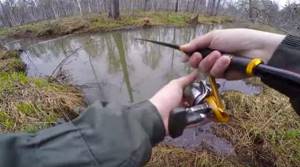
Experience has shown that such small watercourses also contain fish, and sometimes quite large ones.
The only thing (that many people talk about) regarding the place of such fishing is that you really, most likely, will not be able to catch a lot of fish during fishing, since the river itself is small and therefore the fish population living in it is also not very large. But this is fundamentally wrong.
What kind of fish is caught on small forest rivers
Although, if you choose a catchable place on a small river (backwater, pool, under trees, snags), then the fishing success will be higher. And it is possible that a trophy pike weighing 5-7 kilos will be your catch.
This has already happened to me on old small rivers. Among the water lilies, I often pulled a rather impressive-sized pike ashore on surface gear - the largest was 9.5 kilos.

So what kind of fish can bite in this type of reservoir and what is its behavior here? Firstly, here, of course, you can catch large crucian carp and tench. Secondly, roach and rudd are also found here. Thirdly, the ubiquitous ruffe, as practice has shown, also often bites in such places. Fourthly, sometimes carp is also found here.
The diversity of fish species composition is usually due to several factors. Firstly, if you take crucian carp and tench, then some of the fish you catch will be those that live here permanently. Others end up in the river during the spring pre-spawning migration of schools of fish from the main river.
As for roach, rudd, and carp, these species of fish can come here in the spring to spawn, but after the larvae emerge from the eggs, the fry of this species of fish, as a rule, roll down to a larger river in search of food.
Useful and interesting: Is it possible to fish with a spinning rod during the spring spawning ban?
When is the best bite on small rivers?
Practice shows that the best bite in such rivers occurs after spring and summer floods, when high water attracts schools of various fish from the main river. In addition, some fish, including large carp and carp, may come here in the spring to spawn.
Where you can have great fishing on small rivers - catchy places
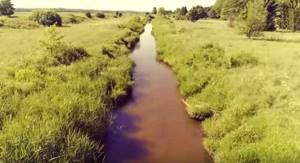
As a rule, the source of food for small rivers is the outlet of cold and oxygenated water. Therefore, often in hot summers, fish also rise upstream in such watercourses from the main river, where there is not so much dissolved oxygen.
As for the specifics and places of fishing on such rivers, here you need to know the following. Most fish are still found in the estuary area where your small stream flows into a larger river.
In addition, when fishing along the banks of such watercourses, always exercise extreme caution and silence. Since the river itself is small and shallow, and the water in it is usually crystal clear, the fish here do not react sensitively to all external stimuli.
Where to fish on the river.
In any case, the fishing area on the river is very important for us in terms of fishing. It is advisable to know where and when the bream migrates, or if it is here all the time, where the bream trails are. It’s very good to know where the dumps are on the river, because that’s where the bream feeds. Even small rivers in some areas are promising for fishing, but our results may not be justified if you do not know this river. On calm rivers, bream is most common; it usually sticks to holes or the river bed.
The warmer the river water, the better. But when it overheats too much, the bream becomes inactive and goes to depths where the water is cooler. The optimal water temperature for fishing on the river is 20-24 degrees. Bream are most active at this temperature. Crucian carp, carp, roach and other fish that have similar habits to bream are also well caught in rivers during this period.
When fishing on the river, be careful; bream, like carp, is very sensitive and suspicious of any extraneous noise. Sometimes you can see waves spreading across the surface from passing bream. They swim in the upper layers of the river, collecting fallen insects on the water. But as the water gets hotter, you can forget about fishing on the river; all the fish go deeper and become inactive.
The best season for fishing on rivers is in spring and autumn, but even sometimes in the heat of the afternoon you can catch bream if there are springs nearby that prevent the water from overheating. In general, fishing on the river is best only in the morning and evening. I think that from midday the bream is less active and hides in its secluded places.
In clear water, fishing on a river is worse than in less transparent, or rather more turbid, water. Fish, and this applies to bream, have very good eyesight. In turbid water, fish see less and are therefore less careful. The higher the water level, the more fish there are near the shore - use this when fishing on the river. An ideal place for fishing in the river: 1 m depth, 3 m from the shore and a drop from 2 to a depth of 3.5-4 m.
Bait for fishing on the river.
The most proven bait for river fishing, it is designed specifically for bream, with universal flavors (vanilla, strawberry...). The bait should be sweet, oddly enough, but bream has a sweet tooth. The bait should be sticky so that it does not get washed away by the current.
The optimal time for the lump of bait to disintegrate at the bottom is 3-4 minutes. Feeding should be done in small portions, but often (every 10-20 minutes). After the fish starts collecting bait, it becomes less vigilant. In spring and autumn, when the fish feeds significantly minimally, it is necessary to feed less so that the fish does not become oversaturated.
Lure for fishing on the river.
Earthworms “work” only occasionally, usually during troubled waters in the summer or spring. Bream is caught on the river using earthworms, which are attached to the hook not entirely, but in pieces. You can learn about the secrets of catching bream and about the correct placement of a worm on a hook in the article “All about fishing (catching) for bream.”
Maggot is a very popular bait in river fishing. It is also good for catching bream and other fish throughout the year. If you are fishing with maggots, be sure to add it to your bait. In general, it is believed that whatever bait you fish with, it must be in your bait.
If you are fishing on the river and have very rare bites and don’t know what to do, try rolling bait into balls that you threw into the water. Maybe this bait will not hold for too long, but sometimes 20 seconds is enough for the fish to come and bite on it. Your only job is to catch it in time.
Fishing on the river, fishing methods.
Typically, fishing on a river involves fishing with a feeder. But this is usually on large ones, where long casting is needed. I have already written in detail about this type of fishing in the article “Bream fishing. Feeder". When fishing with a float rod, various rigging methods are used. A bite is usually manifested by a slight immersion of the float (sometimes just a few millimeters) for a short time. In any case, the float must be adjusted very well, making it sensitive to the slightest bite.
When fishing with float tackle, fishing on the river usually takes place a maximum of 4 meters from the shore, so you need to use a rod of at least 4.2 m. When installing the tackle, use a small oval float of about 1.5 g. Quite often you have to fish by hand, as bites occur immediately after casting. In this case, success lies in instantly hooking the fish. Fishing on the river is interesting because the fish are constantly moving around in the feeding area. If you add bait in time, the bite will always be constant. The figure shows how to correctly load the float.
Heavy rains quickly muddy the river, and many anglers believe that fishing on the river at such times is not relevant. I can object. During the rains, the water rises and the fish go to the shore to feed. Since streams from the fields carry with them a lot of food for fish. When the water is cloudy, it is best to fish in the river from the shore and with a float rod.
For such cases, when fishing in muddy water and at short distances, we use a classic float, which does not slide, but is attached to the fishing line to fix the desired depth. Fishing is carried out almost at the very bottom, as the fish on such days look for settling food particles. The size of the float (classic) is selected in accordance with the conditions - depth, weather conditions, and also depending on what you are fishing in this place. It is important to properly balance the float. The float should be balanced so that the water covers half the antenna, not half the float. This is correct because when the fish touches the bait, it should sink or pull to the side.
Methods of fishing on the river
I highlight four methods of fishing on the river for open water (poaching does not count), namely:
- spinning;
- bottom;
- float;
- fly fishing
Each fishing method is radically different from the others and makes it unique. To master one of them perfectly, you need to spend more than one year. But don’t give up right away - to catch pike, bream or catfish you don’t have to become a professional, it’s enough to know the basic principles, and the rest of the experience will come in the “process”, directly from fishing.
Fishing with spinning rod
Spinning fishing on the river is perhaps the most active fishing method. When fishing on the shore, a fisherman sometimes travels several tens of kilometers in search of a bite. Moreover, you need high-quality gear, which costs a lot of money.
This method is designed mainly for predatory and semi-predatory fish, but in my memory there are exceptions. The main objects of fishing are pike, perch and pike perch, less often - asp, chub, ide, rudd and catfish.
For those who have decided to take up this type of fishing, I suggest you follow the link and read one of the articles in the “Spinning Fishing” section.
In spinning fishing, such components as tackle and rigging, time and place of fishing, season and water temperature are extremely important. Just look at the number of invented equipment. A huge field for experiments will not let even a seasoned spinning fisher get bored.
Fishing with a fishing rod
Oddly enough, but with the right approach to the float rod, you are guaranteed not to be left without fish. I can say this with one hundred percent confidence. Even on the darkest days, a lively roach or white bream was always swimming in my cage.
This year I fished with a fishing rod several dozen times and, on average, in 4-6 hours I caught 2-3 kg of roach the size of my palm, and sometimes quite weighty bream and bream came up. The largest bream caught with a fishing rod this season weighed one and a half kilograms. That day, a puzzled neighbor told me: “I go fishing two hundred kilometers away...”
At this time, many types of fishing rods have been invented, adapted to different conditions of the reservoir. You can find them on the website in the “Float Fishing” section.
This method requires a thoroughly thought-out approach in choosing the location and the bait used on the hook. In addition to everything, you must be well versed in feeding.
The basic rule of fishing on the river is what you feed is what you catch.
Fishing on a donk
This is a separate group of fishermen, which includes many subgroups. Of these, three main ones can be distinguished:
- carp fishermen;
- somyatniki;
- breamers.
Each subgroup is unique, has its own selection of gear, equipment, bait, and so on. In general terms, you will learn about such tackle as donka by going to the article “Donka”.
Our local bottom fishers practice bottom fishing using cheap Chinese spinning rods and install on average about three to five gear. The equipment consists of a spring stuffed with pea mask to which a pair of short leashes are attached. The bait is polystyrene foam pierced through. With the help of this simple equipment, I caught a lot of our local bream and bream.
Feeder fishing has become very popular today. This is a more modern and sportier type of bottom tackle. The main differences between a feeder and a donkey are a special fishing rod and a set of special feeders with different areas of application.
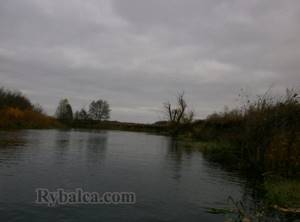
Fishing on the river for predatory fish.
Fishing on the river from a boat.
To fish on the river, a fisherman needs a spinning rod - second or third class, with a long handle. If fishing is carried out in places or areas with a rocky bottom, where hooks become dull very quickly, you need to have a sharpening tool with you, I usually take a diamond needle file with me. In order not to tire yourself when lifting a load (anchor) frequently, you can develop a special buoy.
Be sure to take a landing net with you into the boat. Without it, it will be difficult to pull large fish into the boat. And one more thing, when fishing from a boat, take some kind of bag or large dense bag with you. Place the caught fish in it so that it does not jump all over the boat. If you are fishing for pike, be sure to use metal leashes. The pike instantly saws through fishing line or braid with its sharp teeth. The length of such leashes should be 130-150 mm.
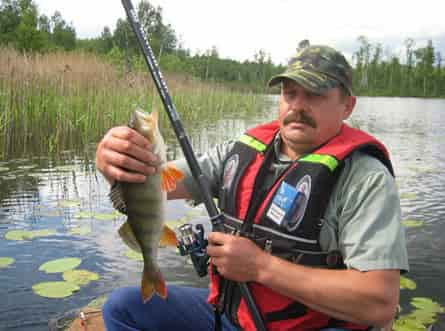
Fishing on large rivers has its own specifics - you need to know the bottom topography and its features. It is best to walk around the water area with an echo sounder before fishing and remember or write down the areas for fishing. If you find a drop from deep water to shallow water, the so-called drop, this is the most promising area for fishing on the river. There will always be predatory fish, pike or pike perch, here.
Also good are places where there are ravines, ditches, roots, and so on. The more places you spot, the more successful your fishing on the river will be. Be sure to pay attention to the times when fish predator activity is most intense. In different parts of the river, pike and pike perch behave differently. Using your echo sounder data and visual observations, you can fish all day on large rivers, just in different areas.
Careful preparation and careful analysis always gives a chance to catch a trophy. When catching a large predator, be it pike, pike perch or catfish, trolling lures are mainly used for fishing from a boat. These are large spoons and wobblers with a diving depth of one and a half meters. If you find an underwater hill (where the depth drops sharply), you should fish it carefully.
This is a kind of feeder for peaceful fish, and, accordingly, for predators. In such a place, large pike perch often sits in ambush. As a rule, the predator stands with its muzzle in the direction of a shallower place. This means that it is worth fishing from the middle of the hill, gradually expanding the fishing radius. This is an interesting specificity of fishing on the river when catching a predator - pike perch or pike.
If you suddenly forgot the landing net, it’s not a problem, because the fish can be pulled into the boat without it. Only your actions in this case should be very careful and there is no need to rush. Bring the fish to the boat itself (for example, at a distance of 38-40 cm) and, without lowering the end of the spinning rod, you need to turn around its axis 2-3 times. After this, the fish completely loses orientation and stops pulling to depth. Now you need to bring the pike or pike perch all the way to the side of the boat and, sitting down, quietly take it under the gills and put it in the boat. On large rivers there is always pike, pike perch, large perch, whitefish, and knowing the places you can catch trophy catfish.
Bait for the river
Let's roughly divide the bait for the river into two groups - live and plant. I will not list all the types and names of baits, but will go through only the most basic, most catchy ones.
Live bait
- Caddisfly. One of the smallest and at the same time most catchable baits. It is caught directly on the reservoir in bottom algae or bottom debris and is a larva wrapped in a “house”.
- Bloodworm. Mostly used for winter fishing and early spring. It looks like a small red worm and is the larva of a mosquito mosquito.
- Maggot. White small agile worms that are fly larvae.
- Worm. They mainly use red dung beetles, which have a pungent, specific odor.
- Crawling out. A large worm almost as thick as a finger. Just a great bait.
- Grasshopper. The grasshopper is also a grasshopper in Africa.
- Fly. Caught it, baited it, threw it away. Everything is extremely simple.
- Chafer. Used in the spring mainly for chub fishing.
- Frog. The characteristic of this bait is that it is rare, but accurate.
- Live bait. A small fish that is used to catch predatory fish.
Vegetable baits
- Pearl barley. In my opinion, this is the best vegetable bait.
- Corn. Good too.
- Peas. Used for catching larger specimens of bream, carp and crucian carp.
- Bread. Take the crumb and knead until smooth.
- Pea mastyrka. In my opinion it is also the #1 bait.
You will find the recipe for making mastyrka in the article “Pea mastyrka”
As for me, when fishing I take with me boiled pearl barley (for a fishing rod, for feeding), mastyrka (for a bottom in a spring, for feeding) and, if you’re lucky enough to get them, crawlies (all the fish that are their size eat them) .
Fishing on the river near the shore or in shallow areas.
Fishing close to the shore or in shallow areas is different from fishing on a river described above, where there is depth. In coastal areas, small fish are generally caught, although there are exceptions. Many anglers fish in shallow water areas. This method is well described in the literature and there is a lot of information on the Internet, so we will briefly touch on it, especially for beginner spinners. This method does not require extensive knowledge of the bottom and topography of the area, and is easily learned by novice anglers.
For experienced river fishing enthusiasts, fishing near the shore is also interesting. When fishing with a spinning rod like this, it is important and necessary to be able to accurately throw at the target, and this also brings moral satisfaction. When fishing with a spinning rod near the shore, it is best to cast with one hand while sitting in a boat, so the angler remains invisible. When fishing for pike or pike perch near the shore, you should not use dead fish, deep-sea wobblers or heavy jig heads as bait. These depth lures do not produce the desired effect. At best, they will only bring tufts of grass and algae after each cast. A floating wobbler can be unexpectedly effective.
Fishing on the river from the shore.
Fishing on a river from the shore is a little different from fishing from a boat. If the river bottom in the coastal area is flat, you can enter the water. Long boots or overalls are a must for such occasions. The bait remains the same, but the spinning rod should be of medium hardness and a landing net with a short handle. Bimanual spinning in coastal fishing is convenient because it easily allows you to bypass an obstacle - an island of vegetation protruding separately from the water.
Having a two-handed spinning rod as recommended does not mean that you should not use it with one hand. It's just a matter of convenience. Fishing on the river from the shore with a spinning rod should be a little more careful when casting. You need to choose the place where the bait will fall and be sure to send it there. Here it is necessary to take into account the direction of the wind and the flight altitude of the bait in a side wind, since the latter, through the slack of the fishing line, can carry the bait to another place.
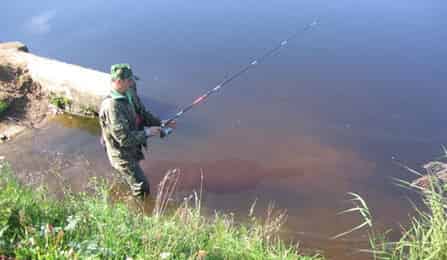
Most often, pike and perch are present in catches from the shore, but asp is also often caught. When fishing from the shore, pike perch is rarely caught or not caught at all. Fishing on large rivers with low banks is a little different from coastal fishing. Spinning rods usually used are second and third class. Lures are heavier and larger.
In such places you can catch asp and pike perch. Typically, fish in rivers stand below the dams, and lie in wait for fish that cannot cope with the strong current and are carried down tired. This is an easy prey for pike, pike perch and asp. Large quarry rivers flow over long distances; they are good for catching asp, so do not use thick fishing line or braid (maximum diameter no more than 0.35 mm). If the river has a pool with a reverse flow, attention should be paid to this. Catfish like to stay here, so there is an opportunity to catch a rare trophy. Rivers of this type usually allow you to catch whitefish, pike, asp, chub, perch if you're lucky, and catfish.
Fishing on fast-flowing rivers
There are rivers with “inconvenient” flows, and there are many of them in the vastness of our Motherland. There are no comfortable creeks and deep areas, obvious riffles and shoals - as they say, there is nothing for the eye to catch on. And that’s why many spinners avoid them, but in vain, because they also contain good fish. The conversation in my article will be about rivers where the current is medium to fast. And the most common predators live in them - pike, perch, and even pike perch.
The flow is, if not stormy, then fast
Imagine, some fisherman finds himself on the bank of such a river and sees a picture in front of him: a high bank, a strong current, a width of some 50-80 m. How to fish, with what, and most importantly - where? That is the question. Plus, it turns out that the depths are small - 2-3 m maximum. So go and try to catch at least a bass in these conditions. And for the next few kilometers there is only one river - that’s all. So you will have to fish here, adapting to local conditions. We’ll find out how to adapt to them a little later.
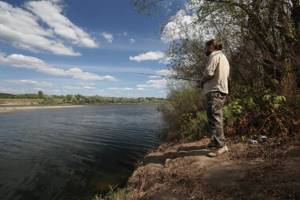
Now let's delve a little into the hydrology of such small rivers: how did it happen that such a strong flow of water appeared.
It is logical to assume that a decent current appears where there is a strong difference in elevation between the source and the mouth of the river. If a river originates somewhere in the mountains and has a decent length, and flows into a larger river already on the plain, then with a 90% probability the current there will not be weak. This is the first reason.
The second and no less powerful reason for the high speed of river flow is the “soft” nature of the river bottom and banks. The sandy bottom and earthy banks, which are easily destroyed by the current, allow the accelerated flow of water to carry away everything in its path. The flow simply has nowhere to stay to slow down. And the sandy bottom does not form obvious deep areas - the sand constantly moves with the current, filling up all the depressions. This is similar to how in the desert the wind moves sand, creating sand dunes. Likewise, water transports sand, forming exactly the same “dunes” at the bottom of a small river.
In search of the toothy and the toothless
So, the reasons are clear. Time to get back to fishing. Or rather, to solve the most important question: where to fish. Many “advanced” spinning anglers know the principle: look for extraordinary sections of the river, i.e. those that differ from the general picture of the water area. So, if the river has a slow flow, then you should pay attention to the part of the river where the flow accelerates. Rolls, whirlpools - everything that goes beyond the ordinary - this is what you need. And our fast-flowing river will be no exception. Only here it’s the other way around. You need to look for any obstacles that somehow weaken the strong flow - you can find a predator there. Slowing down the waterrunner or not doing so at all are the keys to successfully finding a predator on a small river with a serious current. Why? Yes, because an ordinary peaceful fish also cannot constantly resist the current pressing on it, it needs rest - and it looks for calm away from the rapids. She spends most of her time in them. And where there is a peaceful fish, there is a predator looking for its prey.
Read: Fishing on the Tobol River
What else makes fish look for calm in a stormy stream? As you know, the flow of water carries not only sand and particles of earth, but also food for aquatic inhabitants, these are various larvae, worms, insects, which are carried by the flow to quiet places. There they are picked up by fish, which are hunted by a predator.
From my experience of fishing with a spinning rod, I came to a conclusion that may not be a secret for many fishermen, but they often forget about it: pike is afraid of strong currents, always choosing areas with the slowest water speed. But perch hunts according to a different principle. Its main tactic is to move along the shore in order to catch the gaping fry. Mostly small perch, up to half a kilogram, roam along the shore, and the “humpback” in its hunting style becomes somewhat similar to a pike. It occupies very quiet factories and bays and guards its prey there.
Where can you find quiet places in conditions of a small river and a strong current? The first thing you should pay attention to is the thickets of bushes and trees right at the water's edge. During the spring flood, they will be washed away and fall into the water. Some will be carried away by the current, while others will remain here and serve as a barrier to the current. Gradually, floating branches will cling to them and a microdam will form, behind which the flow will certainly slow down, a backwater will form, and small “white” fish will definitely accumulate there - and perhaps a predator will approach. There will be no huge creeks, because we are talking about a river up to 80 m wide, so the scale here is appropriate. But even a section of a quiet current with a length of 5–7 m will already be interesting for a predator, and therefore for us, spinning anglers. Usually, snags form where the river makes a turn and the current hits the bank with force, and there are thickets of trees on the bank. Such steep slopes can give the angler several points where he can try to catch pike and perch.
Interesting spinning spots can form behind islands washed up by the current. Such an island divides the river into two streams. As a rule, the islands on a small river are small, on average 30-50 meters long and no more than two tens of meters wide. After the island, where two streams of water meet, there is almost always a lull with grass and algae, where the fry usually accumulate, which perch likes to come for.
Large (albeit by the standards of a small river) backwaters at the end of high cliffs become a favorite stopping place for pike. The current, hitting the high bank, seems to lick it and in the end goes to the opposite bank, and here a vast and deep area with calm water is formed. The main river stream passes a few tens of meters away, so the water almost completely calms down. Peaceful fish like this place; there is no current and you can always find food. And here there is almost 100% pike, because a quiet place on a small river is its patrimony.
Read: Equipment for fishing in high water
Often the coast collapses, especially where it is high, when it is washed away by water. Clods of earth that have fallen down, and sometimes entire layers several meters deep, block the way for the river flow. After such landslides, an area with a slow flow also forms. It is narrow, sometimes a meter and a half, and not as calm as in the previous case, but even here you can meet a predator. Perch especially likes to be in such backwaters; there it hunts, say, dace, which comes here in search of food.
Not all baits are good
Since we are talking about the special character of a small river with a decent current, then the bait and spinning fishing technique will be special on such a river. More precisely, the baits are the most common ones, but they should not be used everywhere and not always.
I suggest going through the fishing spots listed above and identifying the baits and fishing methods most suitable for them. So, a high bank, snags, small backwaters. What to apply here? The best and most effective will be a jig. Depending on the depth, we select the mass of the lead head. Usually this is no more than 10 g. We take a silicone bait - a vibrotail, a twister, you can also use crustaceans, "Creature", etc., equip it with an "offset" - and forward to casting. The type of bait does not play a special role, because we are fishing short and the predator has no time to think - if he is there and is ready to attack, he will do it immediately. Unlike stagnant reservoirs, where the wiring can last 20 or 50 m, here the wiring is 2-3 m, and sometimes even less. It’s also worth thinking about the “edibility” of silicone bait, because we fish on a river where we can’t expect many bites, so we do everything possible so that the predator does not refuse the bait after an attack, but gives us the opportunity to hook it. “Eedible” is a good helper for us in this.
It was not by chance that I focused on the type of hook. Since we are fishing in a pile of branches and snags, hooks on the bait with an exposed hook will happen on every cast. A silicone bait on an offset machine will protect you from such troubles in 9 out of 10 cases. You can forget about using anything else in conditions of dray snag. It’s simply not possible to use a wobbler and a “spinner” here. You can try a spinnerbait as a backup option, sometimes it works.
As for fishing tactics, you shouldn’t dwell on this point for a long time. A dozen casts, no attack - you can safely move on. The more points we check, the better the result of our fishing will be.
Backwaters after islands and large areas of calm water at the end of steeps expand the range of baits used. You can start with the same jig, but continue with wobblers, spinners, and oscillating spoons. For such places on a small river, the absence of dray snag is typical. Therefore, we break through the points with a jig - and if we feel that the place is clear of snags, we put other types of baits. This largely depends on the season. In the summer, minnow wobblers, cranks, and spinners will be effective. In late autumn, the main emphasis should be placed on the vertical component in the wiring, i.e. on the jig.
Read: Tick attack: how to protect yourself from bites
And under the steep slopes, where the high bank does not allow us to go down to the water, fishing will be the most difficult, but there is a solution. This is still the same jig or its variation - Carolina rig. It seems surprising, but in such backwaters cranks work with a uniform retrieve. Only they should be taken in the dip version, i.e. with good depth. A crank with a working horizon of up to two meters would be ideal. And due to the fact that we are fishing from a height, he will not walk at two meters, but somewhere at one. This is the very horizon that we need - and the perch that wanders along the shore here will definitely covet the active “game” of the potbellied fish.
Not a count, but about
Special fishing conditions also place special demands on the fishing rod. At the same time, spinning rods can be the most affordable in price. Depending on your preference, there are two options to choose from.
If you like to fight with fish on the “brink of a foul” (this is when the fish often comes out victorious), then a light spinning rod is suitable. I admit, I use this one quite often. But there is still a certain risk. If, in conditions of a high bank or rubble of trees, a pike lands for two kilograms, it is difficult to say who will emerge victorious.
And the second option, for me, is the most successful. This is a powerful and short rod, which many people use on overgrown micro rivers. On such a river with a fast current and inconvenient spinning points, a model with an ounce of dough will be especially appropriate. With such a spinning rod, you can throw trophies up to two kilos straight onto the shore without fear that something will break. True, sometimes difficulties arise when casting light bait, but on the river we are talking about, all fishing is carried out in the coastal zone within a 10-meter radius.
Get ready to walk
And now about the difficulties that lead to the fact that spinners ignore small rivers in a confluence. To catch fish on such a river you need to walk a lot. Not a kilometer, not two, but sometimes up to two dozen. It’s good if there are roads near the river and you can drive up by car or some other vehicle. Although even in this case you will have to look for approaches to the water, climb steep slopes and climb over snags and windbreaks.
In general, this type of fishing is for those who like active spinning. This fishing requires not only great physical strength, but also mental patience. Making your way for a long time and with difficulty to some point through thickets of blackberries and willow, you may not see a bite in this place - and then you have to move forward again, to another equally difficult point on the river. But if you correctly identified the place and found an approach to it - in the literal sense of the word - the point will work throughout the spinning season until freeze-up.
River
Fishing on medium rivers.
You can use any spinning rod that suits you. If the fishing area runs along wooded areas, it is more convenient to fish with one hand, having a spinning rod with an inertial reel. But this is not for everyone. I usually fish with a 20-40 cast spinning rod and a spinning reel. In such places you can catch trout, pike, whitefish, asp, chub and perch.
As a rule, the width of the average river is from 50 to 80 meters, which allows you to cast bait almost to the opposite bank. On such rivers you need to move downstream, leading the bait against the current. All visible backwaters and bays, as well as islands with vegetation, are fished. Overgrown oxbow lakes will be a good place and successful fishing.
How to fish on the river
There are a great many rivers in Russia - large and small. And there are more than enough species of fish there. Starting from the most common, “simple” ones, such as ruffe, roach, perch, rudd, to more valuable ones, up to sturgeon and salmon (depending on the region). Therefore, a fishing lover has a place to “turn around”!

Fishing on the river is an activity that many millions of people enthusiastically indulge in. It would seem like a simple matter: take a float rod or spinning rod, bait, and soon you will return home with your catch. But such simplicity is only apparent. In order to catch fish, you need to take into account a number of factors:
- Place and time of fishing.
- Weather conditions.
- What bait is best to use.
- Should I do preliminary feeding, and what should it be?
Fishing on small rivers.
More recently, fishing on small rivers has become popular. More fishermen began to visit such places. Those who like to fly fish go to such rivers. Most often, fishing on a river that looks more like a stream allows you to catch fish such as grayling, trout, mullet and other fish that live in fast currents and cold water, which love seething rapids and sharp eddies.
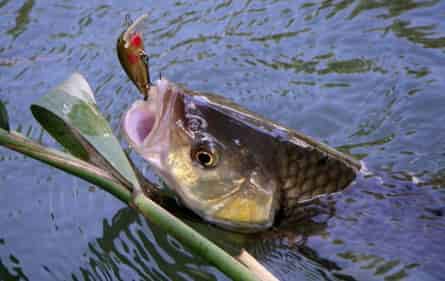
Of greater importance in such fishing is the spinning equipment. Overalls for a fisherman are a must. The convenience of the overalls is that there are many pockets for a box of bait, tools, matches, etc. Overalls allow you to have essential items with you without going ashore - a thermos, sandwiches, a raincoat, a first aid kit, a fish bag.
When choosing equipment for fishing on the river and catching various types of fish, I suggest using the following recommendations:
- catch trout, grayling and perch with a spinning rod 160-190 cm long, line diameter from 0.17 to 0.25 mm, small rotating spoons and microwobblers.
- for mullet - first or second class spinning rod from 190 to 210 cm in length, line diameter from 0.22 to 0.28 mm, rotating baits and spinners with a slight swing.
- asp, pike, whitefish - spinning rod of the second or third class with a length of 210 to 275 cm, reels of the second class (inertia multiplier), line or braid diameter from 0.28 to 0.4 mm, also spinners, spinners and wobblers.
- catfish - second or third class spinning rod with a length of 275 to 310 cm, third class reel (multiplier), a variety of baits are suitable, you need to select the one that will perform best.
So we figured out a little what fishing on the river is. From all of the above, it is clear that you can fish on rivers anywhere and anyhow. The variety of fish there is always greater than in any lake or reservoir. We wish you success, and that fishing on the river pleases you with trophies!
Gear for fishing in small bodies of water
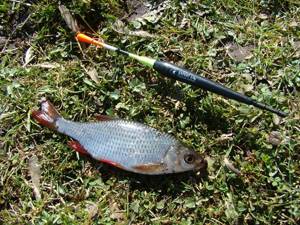
Fishing on small rivers is carried out mainly with float gear, in some cases bottom gear is also used. The donka for fishing on a small river should be light and sensitive. The best choice is to buy a light feeder or picker.
Fishing with a feeder is advisable if the casting range is about twenty meters. At shorter distances, a short picker is preferred.
With a picker you can fish shallow areas remote from the angler, while the cast is often made not across the watercourse, but at an acute angle to it. This allows you to fish in shallow water locations, which are impossible to get close to without spooking the fish.
A picker will also help when fishing at the confluence of two rivers. The place is quite promising, but a float rod is not always acceptable here. The fact is that promising places may be on both sides of watercourses, and the length of the float rod may not be enough. Moreover, the banks in these places may be swampy, or overgrown with reeds, bushes, or thick grass. By positioning yourself with a picker on a dry bank upstream, you can comfortably fish the entire location in question.
A picker is also convenient when fishing a hole at a bend in the channel. The hole itself can often be fished with a fly rod, but the edge of the thickets in the opposite shallow area is also of interest. If for some reason the bite in the hole has stopped, and this indicates that the fish were spooked either by the fisherman himself or by an approaching predator, it is quite possible to catch fish in the surrounding shallow waters without changing position.
Read more about how to choose a picker.
Float fishing on rivers
Fishing with a float rod is not particularly tricky. The spindle-shaped float is selected according to the current. It is desirable to have a thin keel to ensure stability of the float. In quiet holes there is practically no current, so elongated floats, for example, a classic feather, are quite suitable. In shallow water areas, small spherical floats with minimal carrying capacity are used.
Wiring fishing on small rivers is practiced only in the spring, while the water is high and the vegetation has not yet risen. In summer, the rivers become shallow, overgrown with grass, and there is practically no possibility of fishing with wire.
The choice of hooks, leashes and other equipment elements in float fishing does not have any specifics for small rivers, so we will not dwell on this issue separately.

